Koh Kood appears in many popular travel guides for Thailand, but surprisingly, it remains relatively overlooked by tourists. Perhaps it’s because people are hesitant to venture where there are no 7-Eleven stores, or maybe it’s due to other reasons…
The idea that paradise requires beach bars with loud music or that travelers need constant activities to stay entertained has not reached Koh Kood. Although it’s not entirely untouched, it remains largely unspoiled and immune to mass tourism.
Koh Kood, also spelled Ko Kut on some websites, is located in the Trat Province, close to the Cambodian border. If it’s a potential destination for your trip to Thailand, keep reading to learn more.
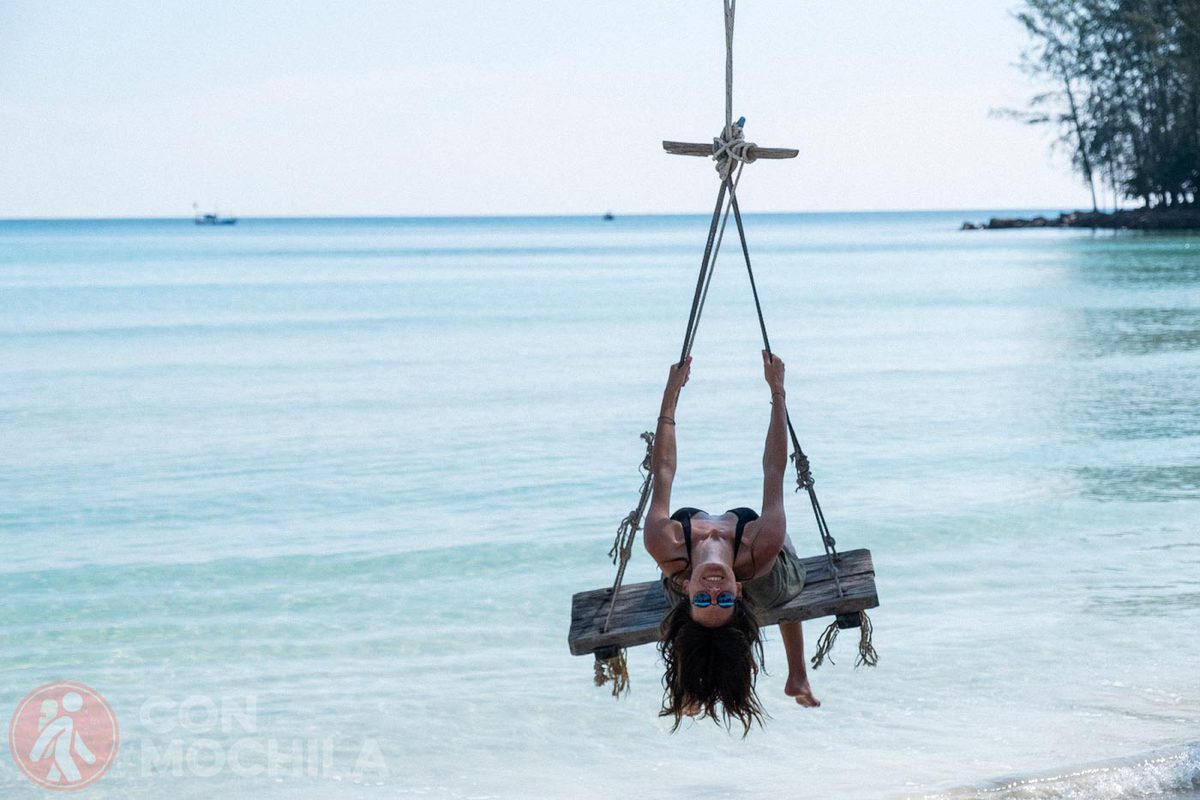
There isn’t much to do on Koh Kood if you’re not fond of water activities. The island’s main attractions are its beautiful, uncrowded beaches, several waterfalls, and some ancient trees.
If you’re looking for a party or a lot of action, this isn’t the place for you. There are few restaurants and even fewer places to enjoy a drink. For more vibrant nightlife and activities, islands like Phuket or Koh Phangan during the full moon party might be better options.
The most effort you’ll exert here might be renting a bike, paddling a kayak, or choosing which beach to visit each day.
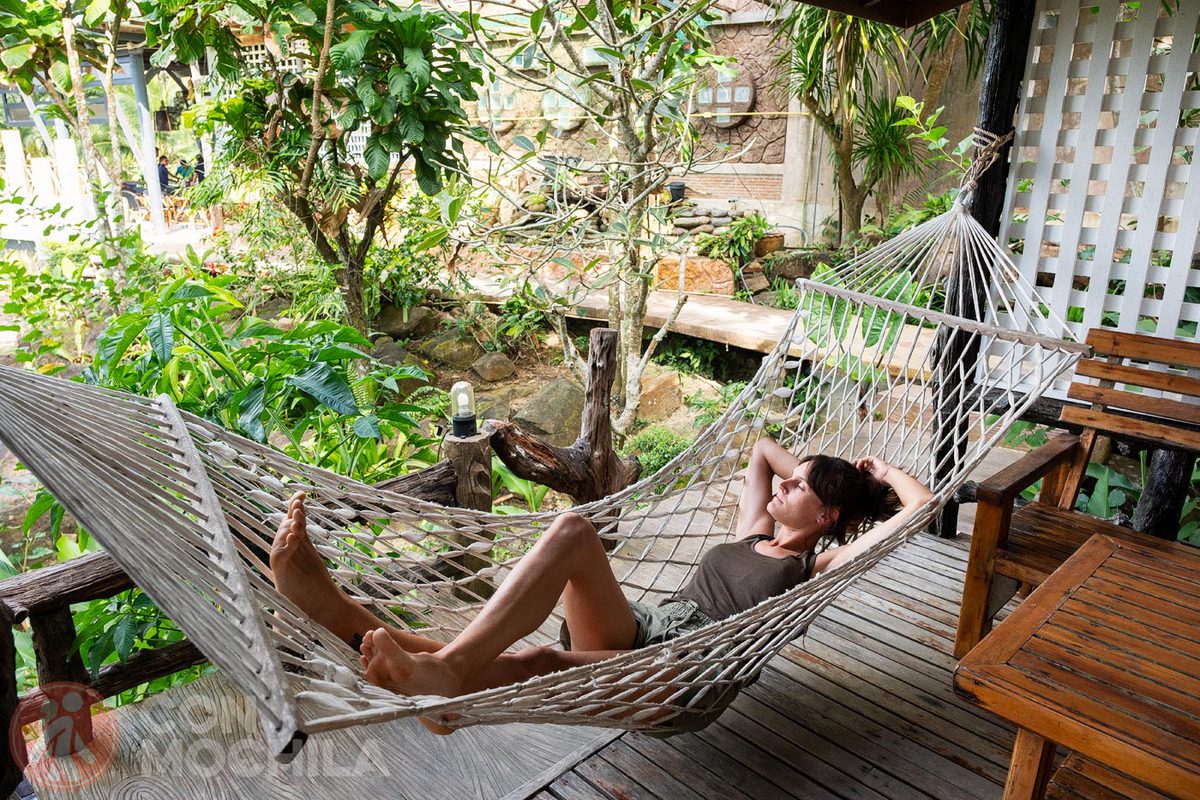
Koh Kood doesn’t offer the typical tourist activity packages, and thankfully, animals here aren’t exploited for jungle walks or Instagram photos—something they truly deserve an award for.
If your goal is to simply unwind and relax, Koh Kood is your ideal island.
Koh Kood is close to Koh Chang, so they share the same climate and seasons. These islands are a good choice if you don’t have much time and want to avoid internal flights, or if you arrive in Thailand around November, when the monsoon season is winding down and southern beaches might still experience storms.
Koh Kood has two high seasons, hot and dry, and one low rainy season:
Travel advice: Check out our article on the best time to visit Thailand for month-by-month climate information.
To begin with, we always recommend getting good travel insurance Thailand. This can save you a significant amount on medical expenses and, most importantly, ensures that the insurance covers the costs upfront, so you don’t have to pay out of pocket.
In the previous article, we go into more detail about healthcare in Thailand, as well as tips on how to get the best insurance (and save money).
Nowadays, finding hotels, guesthouses, or restaurants in Thailand with free Wi-Fi is pretty common. However, there are still those who prefer (or need) to stay connected at all times.
That’s why we’ll show you how to get an eSIM Thailand card with internet— now also available with unlimited data.
Depending on your starting point, there are different ways to reach the island. Generally, the process for traveling to Koh Kood is similar to that for Koh Chang.
First, you need to get to Trat, from where you can reach both Koh Kood and Koh Chang. Buses from Bangkok depart from the Ekkamai Bus Terminal and take about 6 hours. You can purchase a combined bus and ferry ticket.
If you arrive by bus or plane to Trat, you can travel to the port by minivan or taxi. From Trat port, take a ferry to Koh Kood. Be mindful of the travel time to Trat; if you arrive too late and there are no more ferries, you may need to spend the night in Trat.
Speedboats are a less comfortable but viable option for traveling from Koh Chang to Koh Kood. Several companies offer island-hopping services. Tickets can be purchased at port agencies or directly from ferry companies like Boonsiri.
Klong Chao Beach features a clear pool of water with a narrow stretch of sand at high tide. In our opinion, it is one of the prettiest beaches on Koh Kood. Some resorts have established themselves here, but fortunately, they haven’t taken over the place, so you can enjoy a peaceful stroll along the beach.
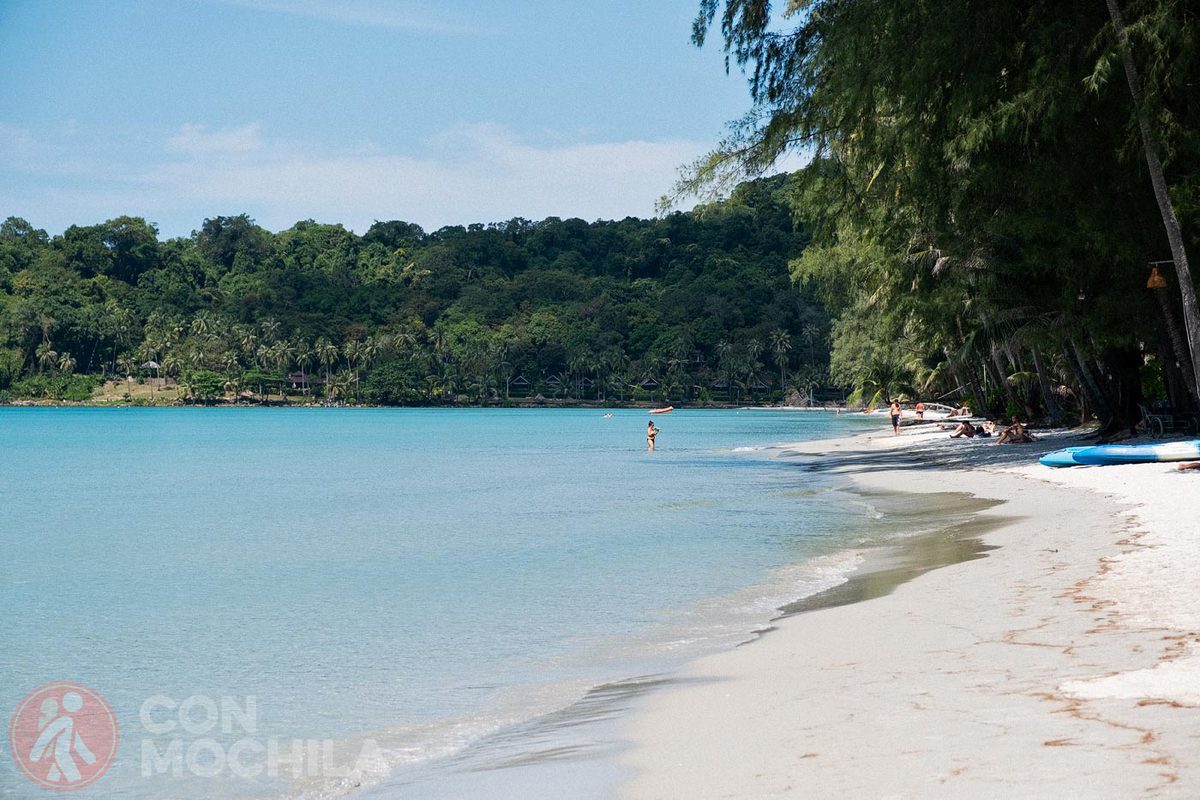
As shown in the photos, you can spread out your towel or sarong under the palm trees and other trees near the shore. This makes it a great spot to relax for an extended period.
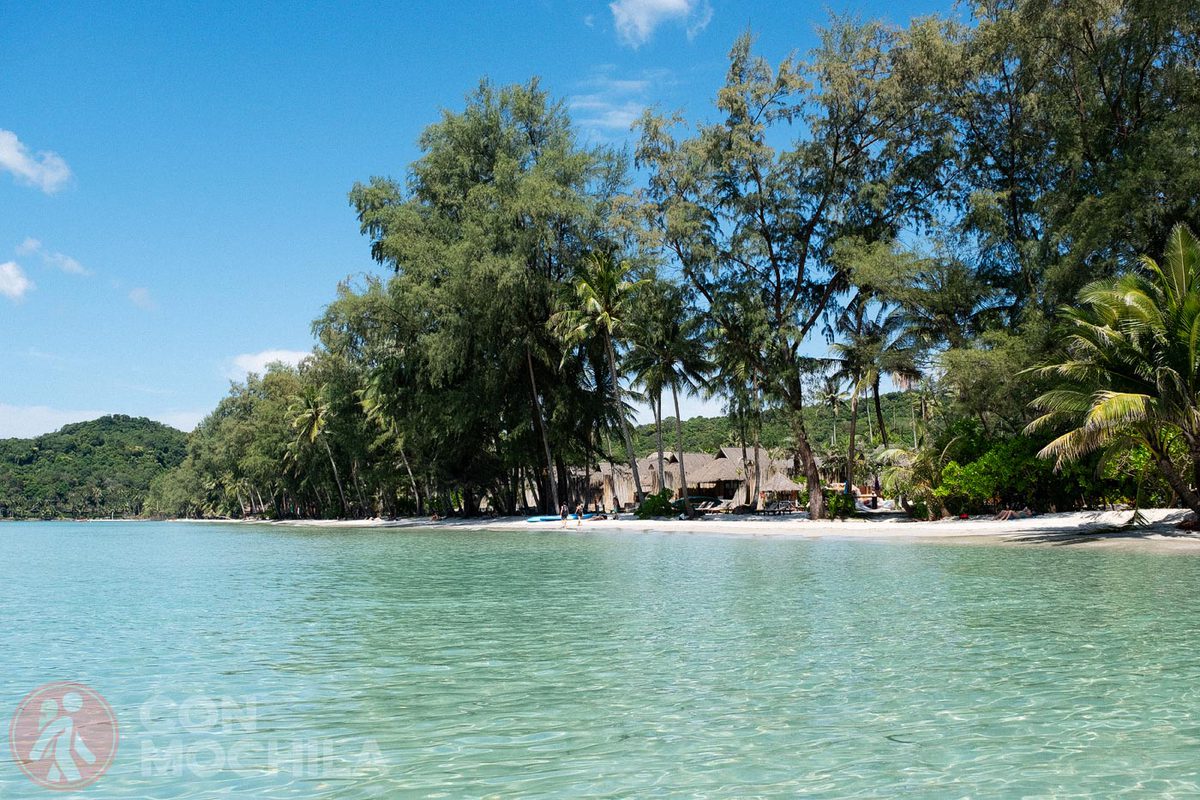
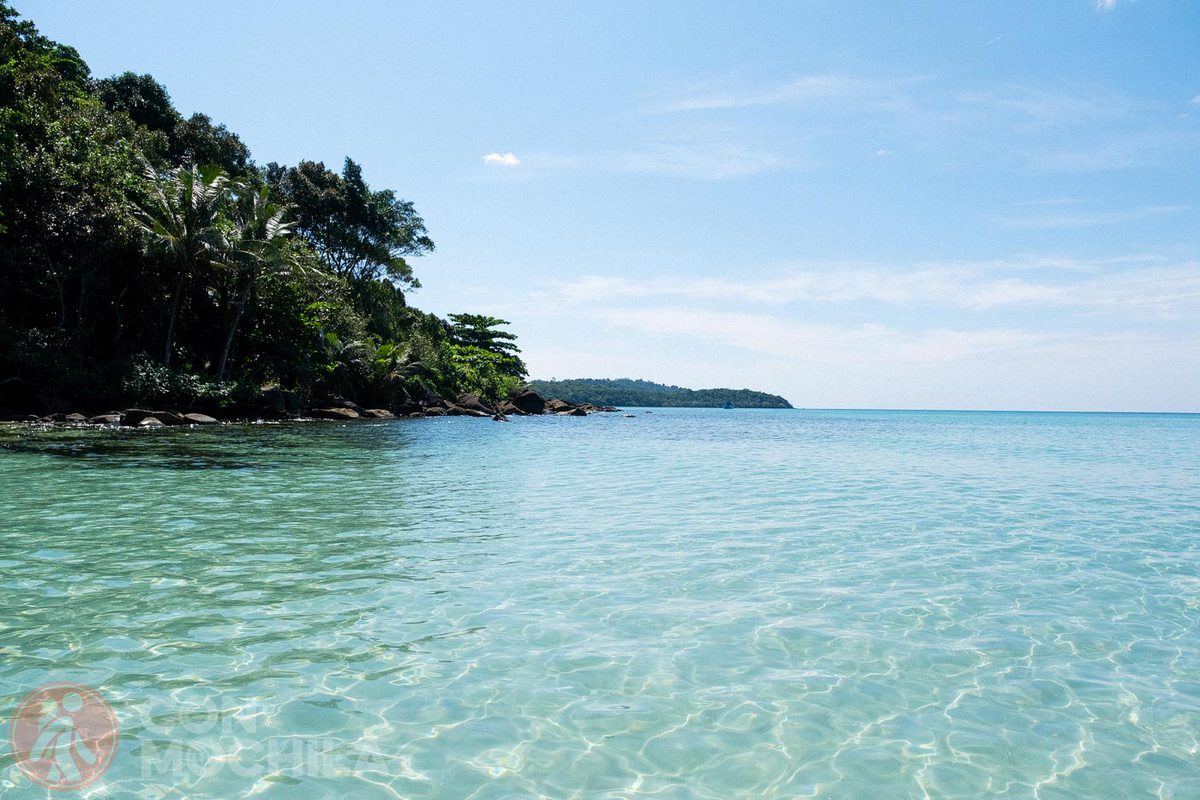
Two swings hanging from a palm tree were all we needed for a good time, but the picturesque landscape was a bonus.
On Ao Khlong Hin Beach, there is a beach bar where you can buy coconuts and a restaurant with a surprisingly large dining area, considering the few people you might see there.
But take a look at the photos, they’ll convince you better than words can.
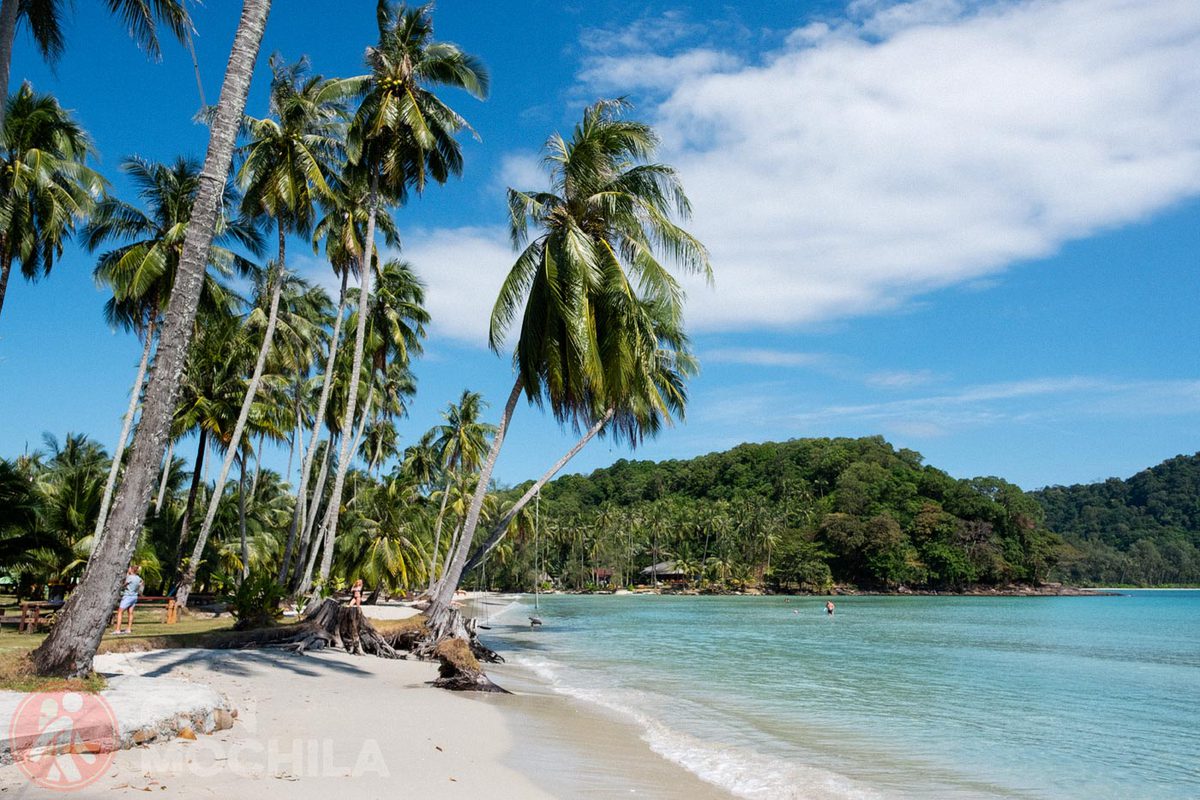

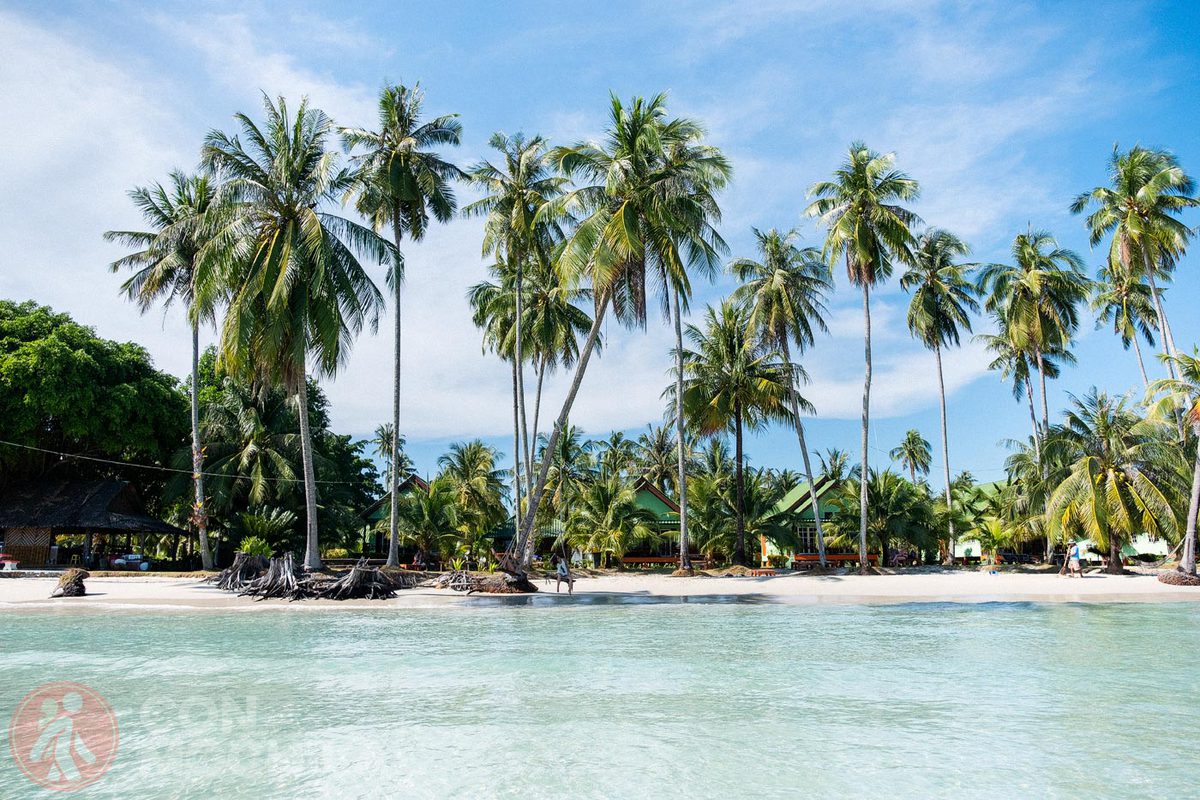
Haad Bang Bao is perfect for siestas (at least ours) where the gentle sound of the waves won’t disturb your rest. The water here isn’t as blue as on some other beaches, but on a good day, it feels like swimming in a lake.
There are also a few resorts here, but as you can see in the pictures, it seems like people are hiding in their cabins…
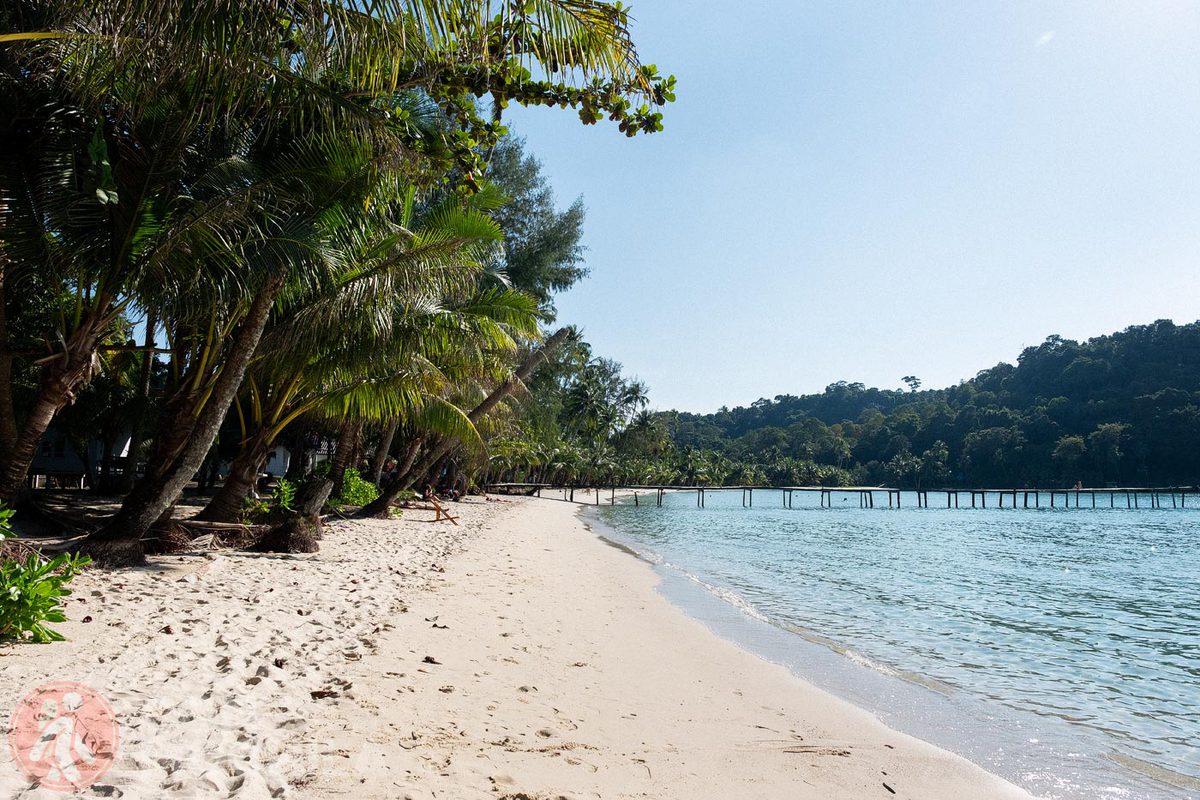
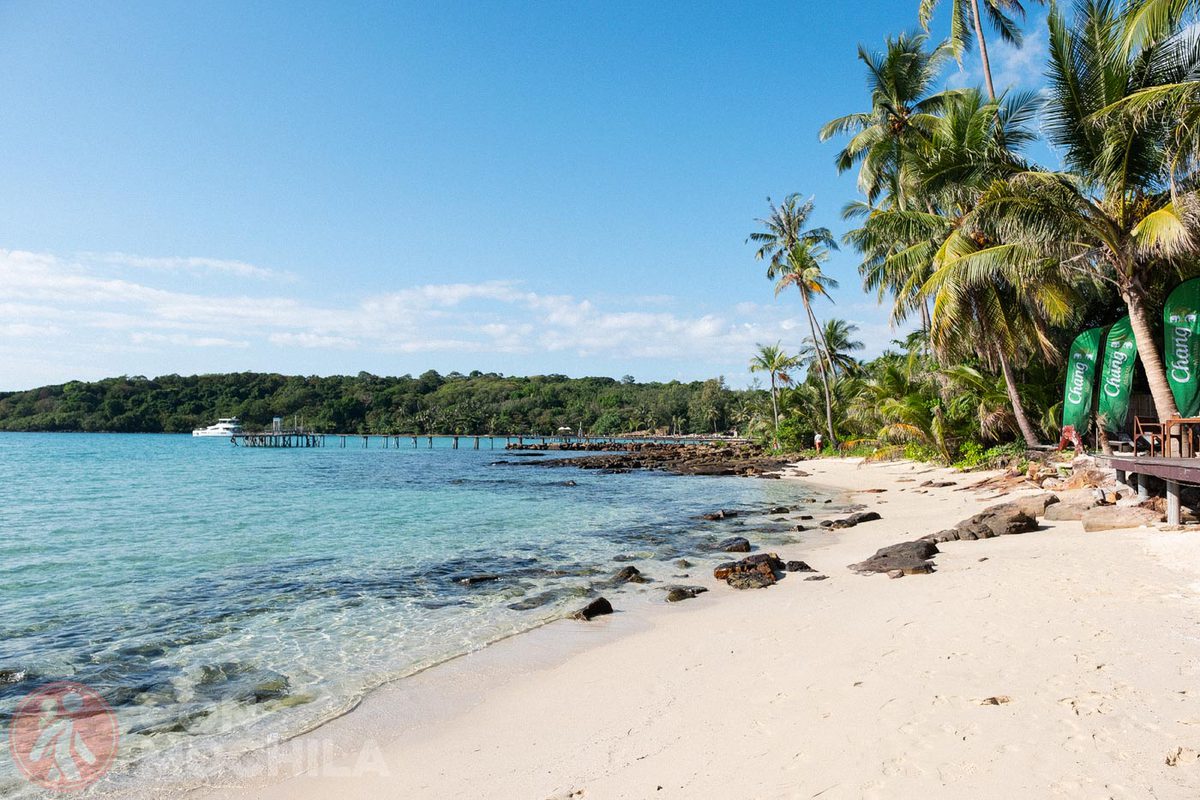
Ao Phrao is wild and almost deserted, especially if you avoid the more developed areas. It’s a bit more challenging to reach by motorbike due to the sandy final stretch, but it’s worth the effort if you want a beach all to yourself.
To this day, we still can’t believe we swam in this paradise almost alone.
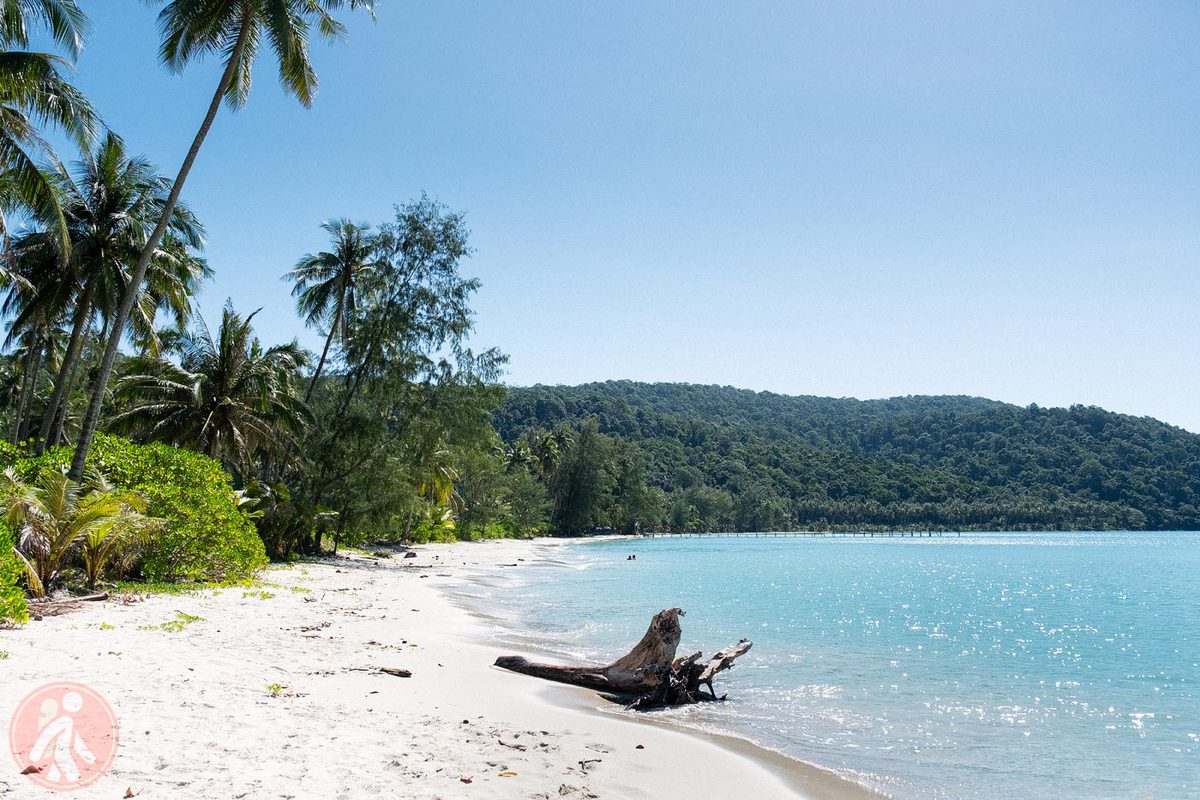
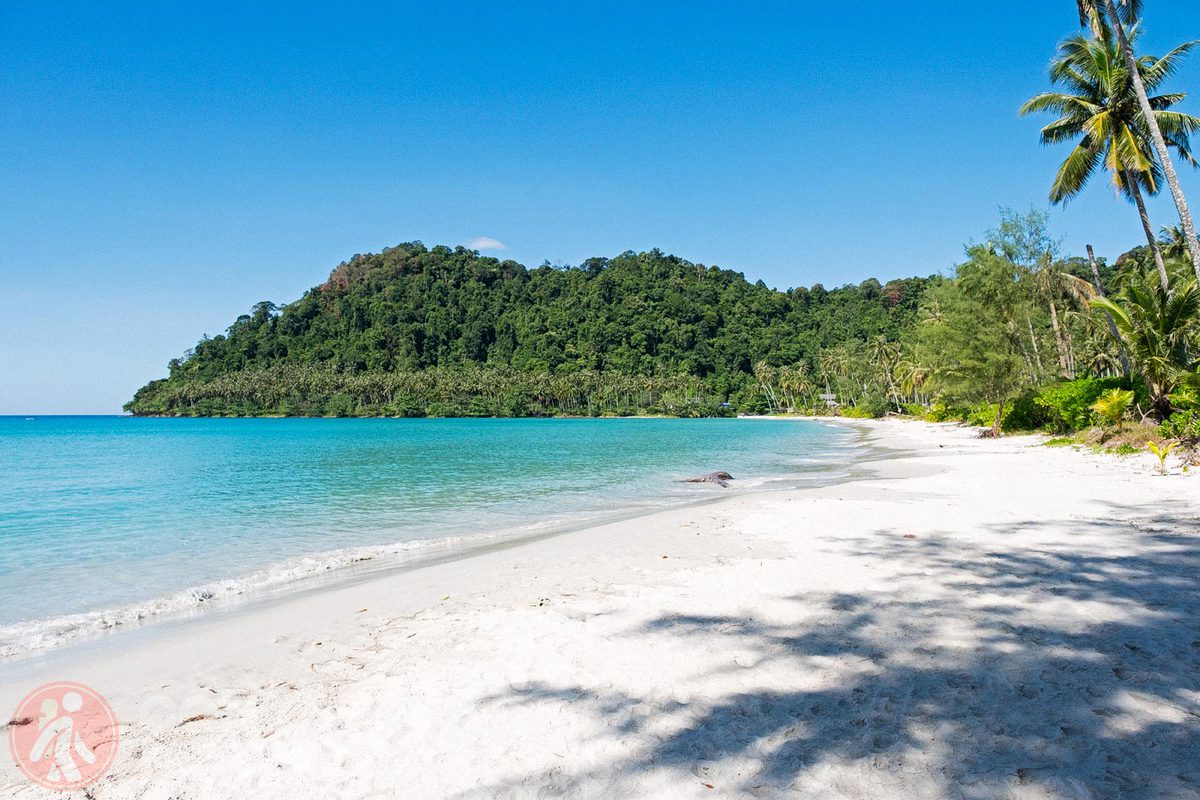
The stretch of beach in front of Suanya Resort is so small that it seems to have no name; I’m not sure if it belongs to Ao Khlong Mat or not.
However, this doesn’t detract from its charm. From here, you can witness the most magical sunset on the island.
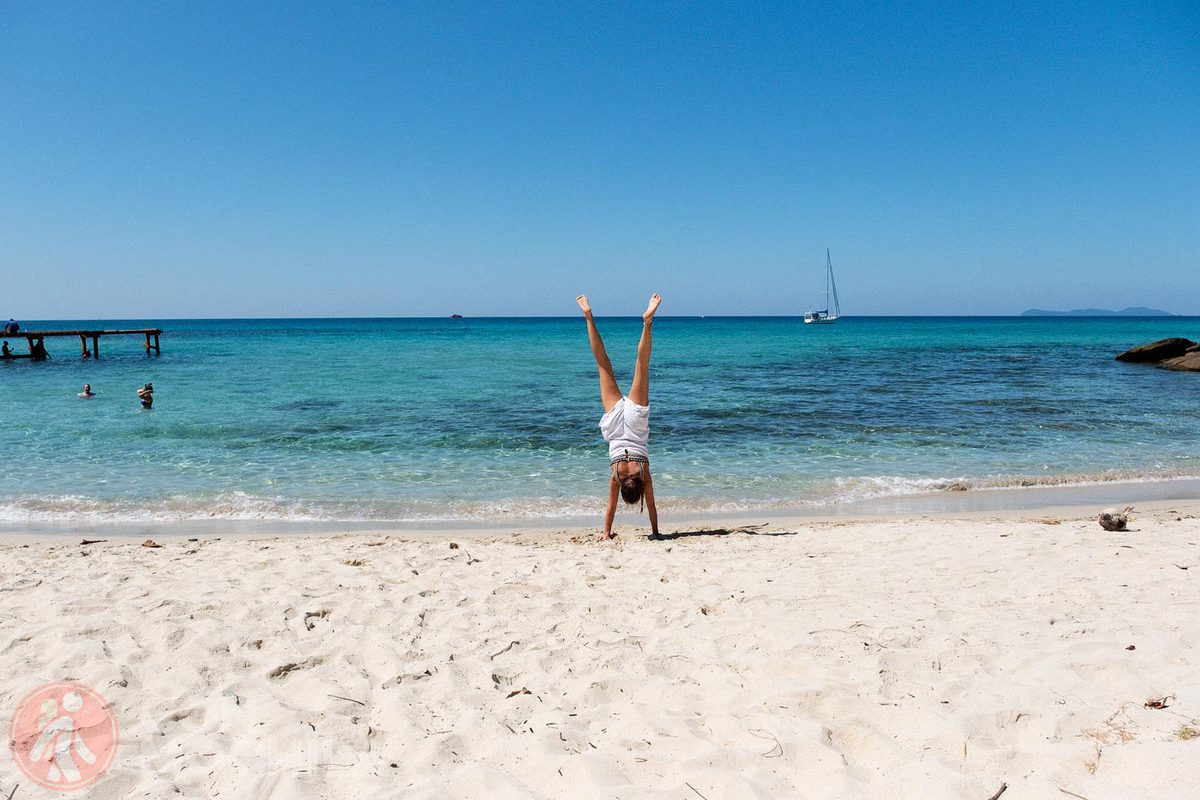
A long wooden walkway and the silhouette of the sunset outline the horizon, which is hard to ignore when the sun sets.
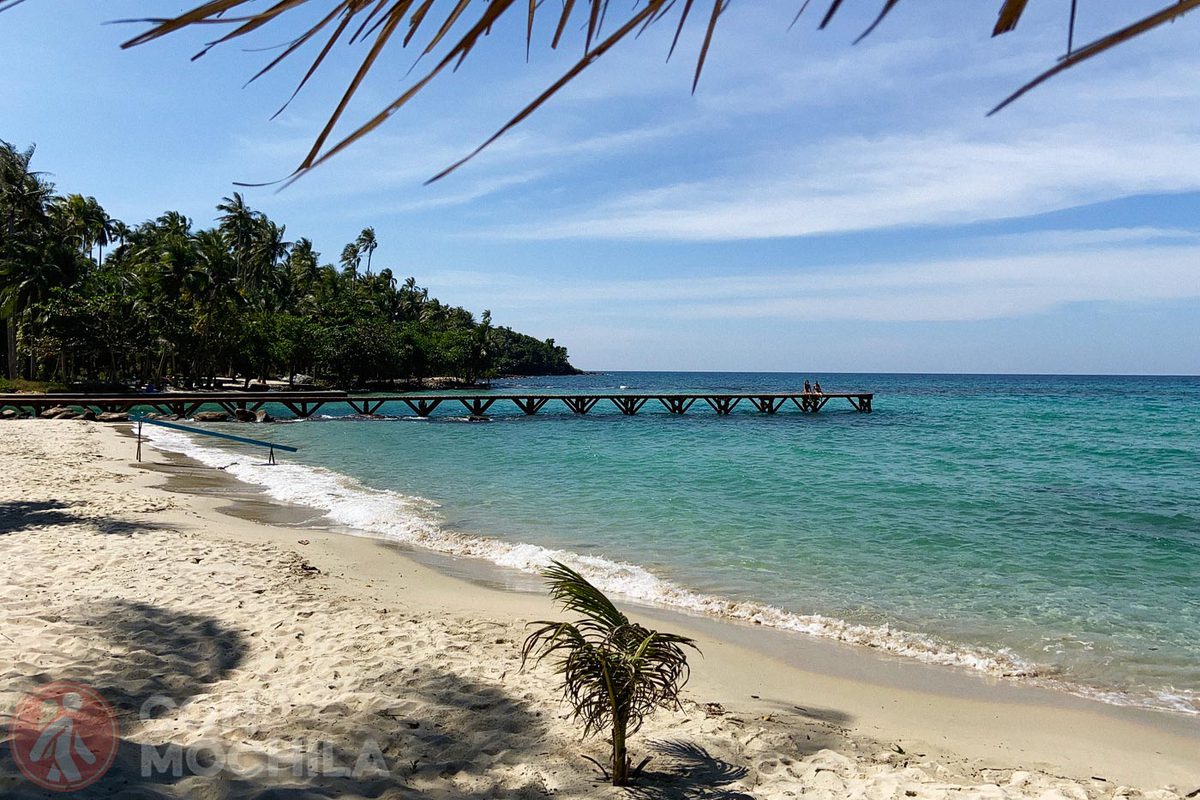
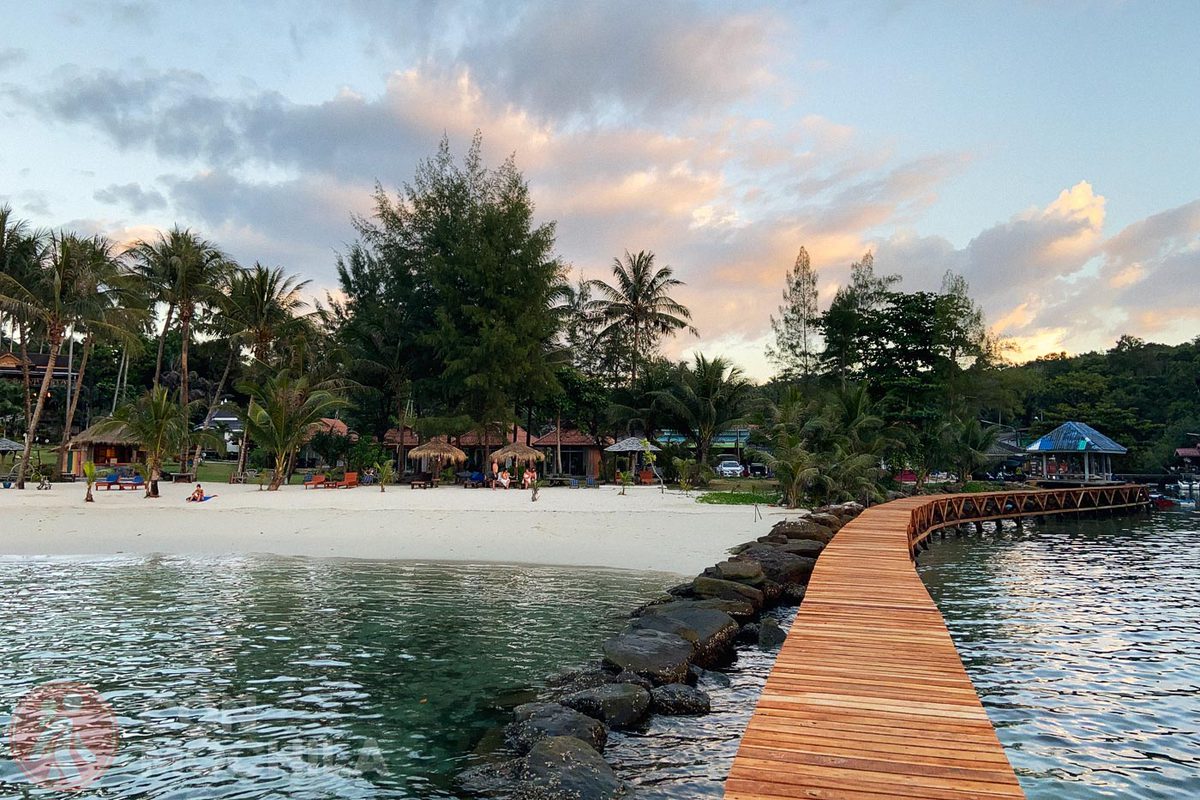

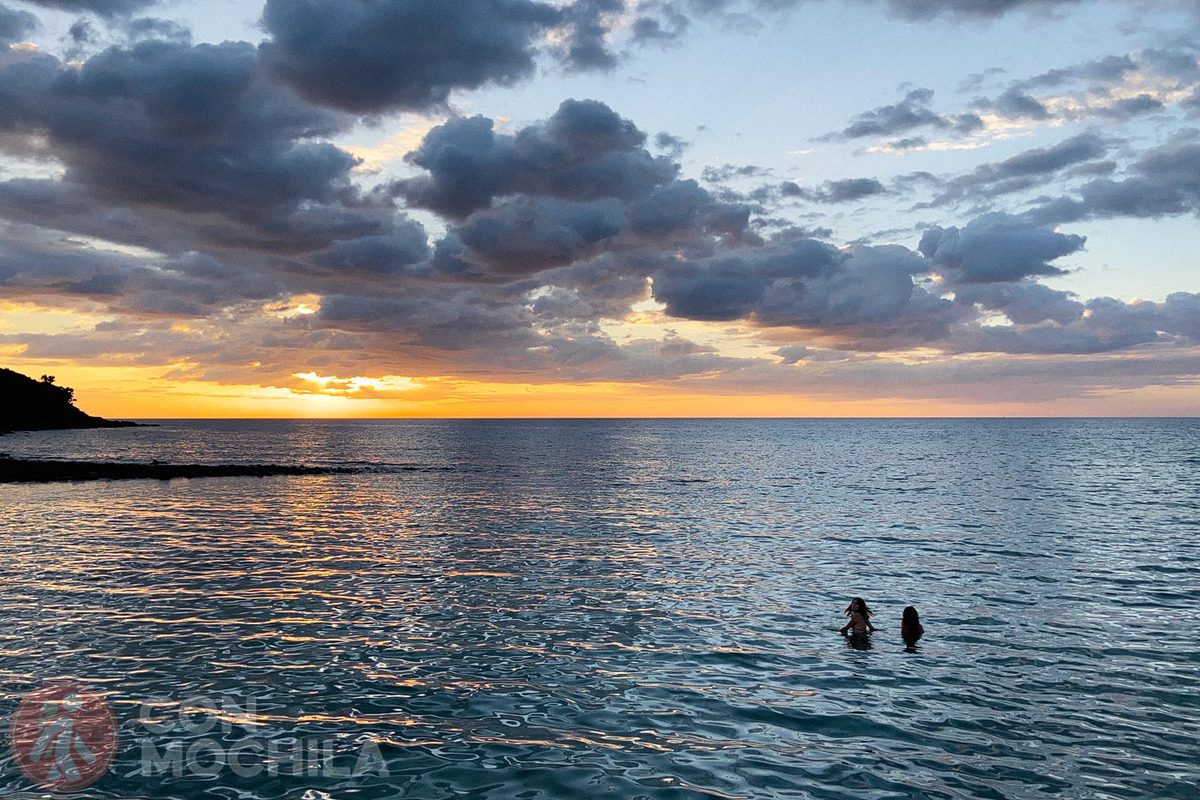

Change the scenery and enter the jungle of Koh Kood. When there is sufficient water, you can swim in the waterfalls, where hundreds of fish will come close to your skin and give you a free exfoliation (there is no entrance fee to the waterfalls).
These fish, known as garra rufa (or doctor fish), are used in some fish tanks for their ability to eat dead skin cells. Don’t worry, it doesn’t hurt!
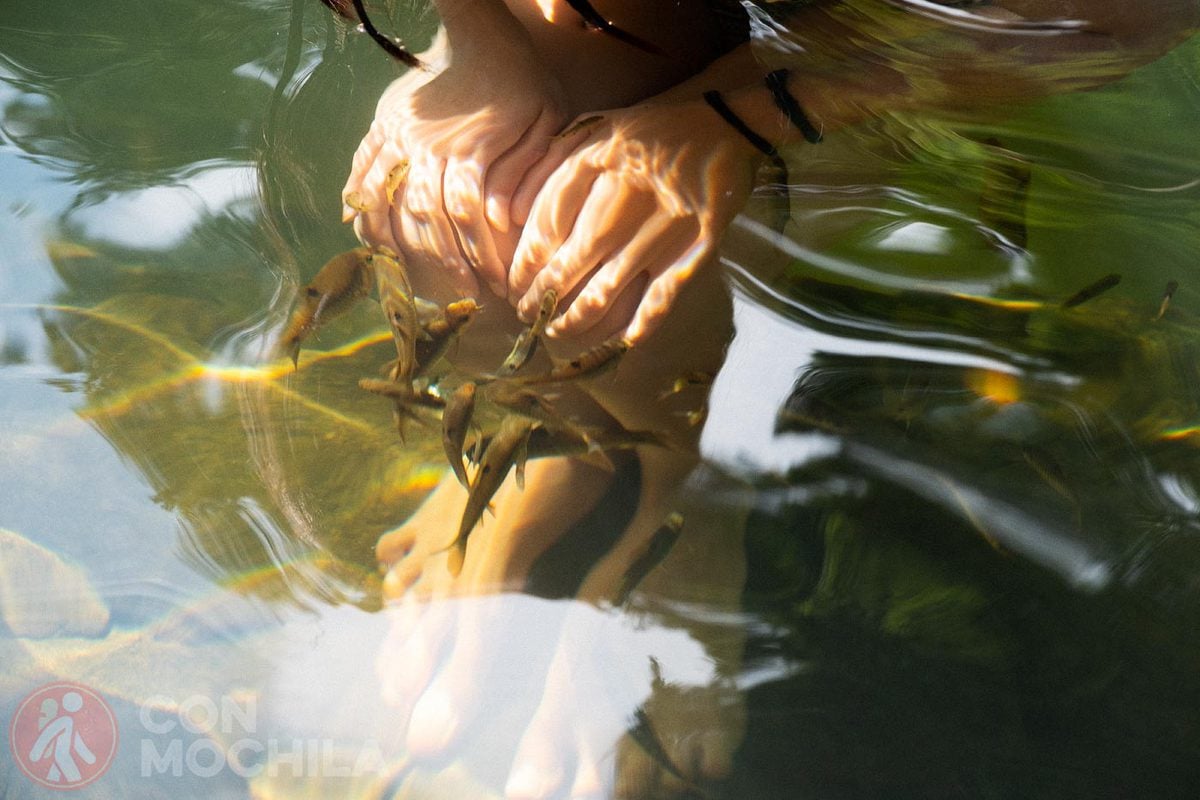
Khlong Yai Kee consists of small waterfalls that few people visit, probably because they are further north. The pool is small, and there is limited space to shelter from the sun. If you’re short on time, we recommend the following waterfalls, which are more impressive.
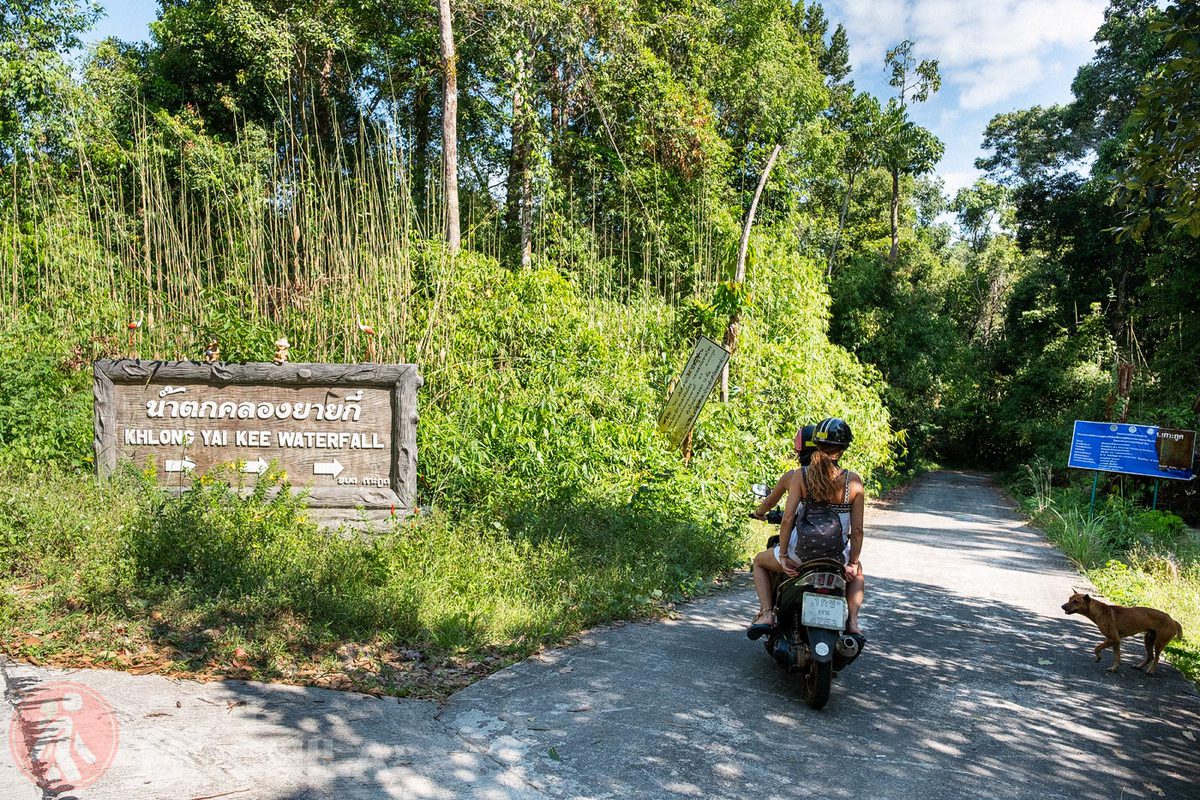
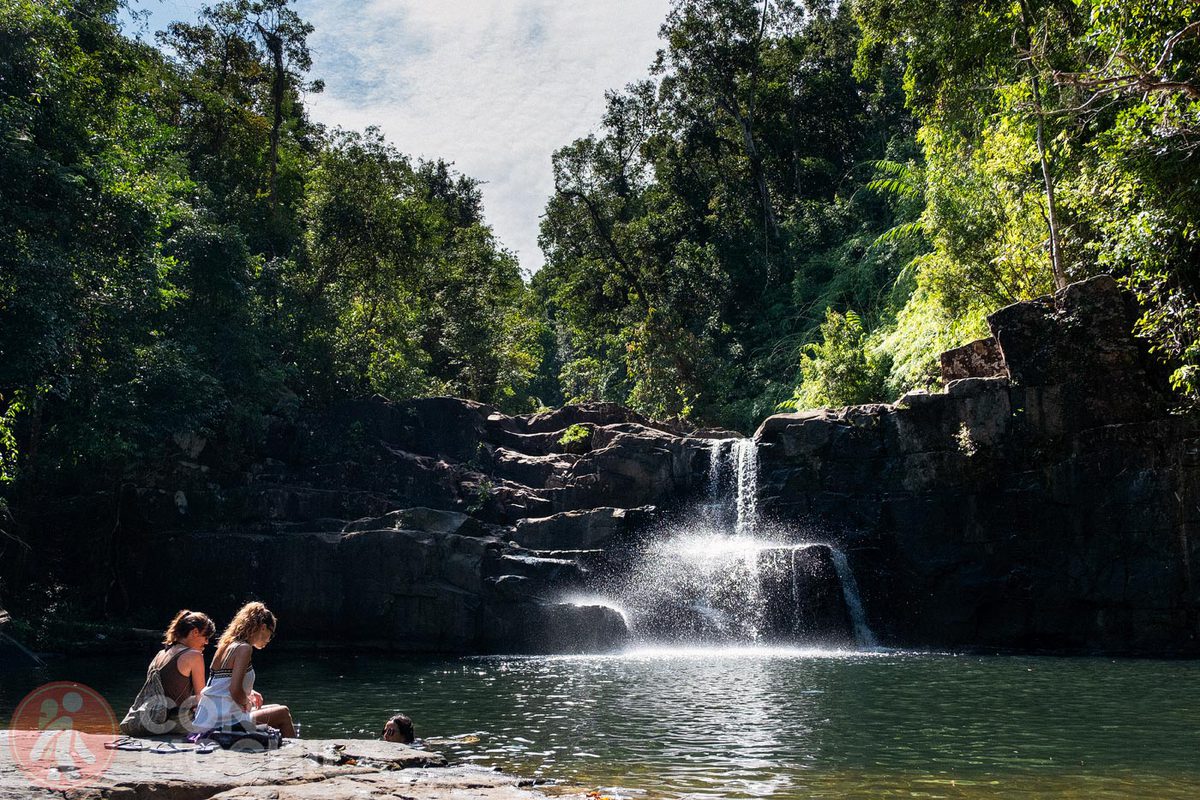
Khlong Chao is bigger and more spectacular, which means it attracts more tourists. At Khlong Chao Waterfall, you can swim up to the falls and shower under the jets of water but hold onto your swimsuit or it might get ripped off!
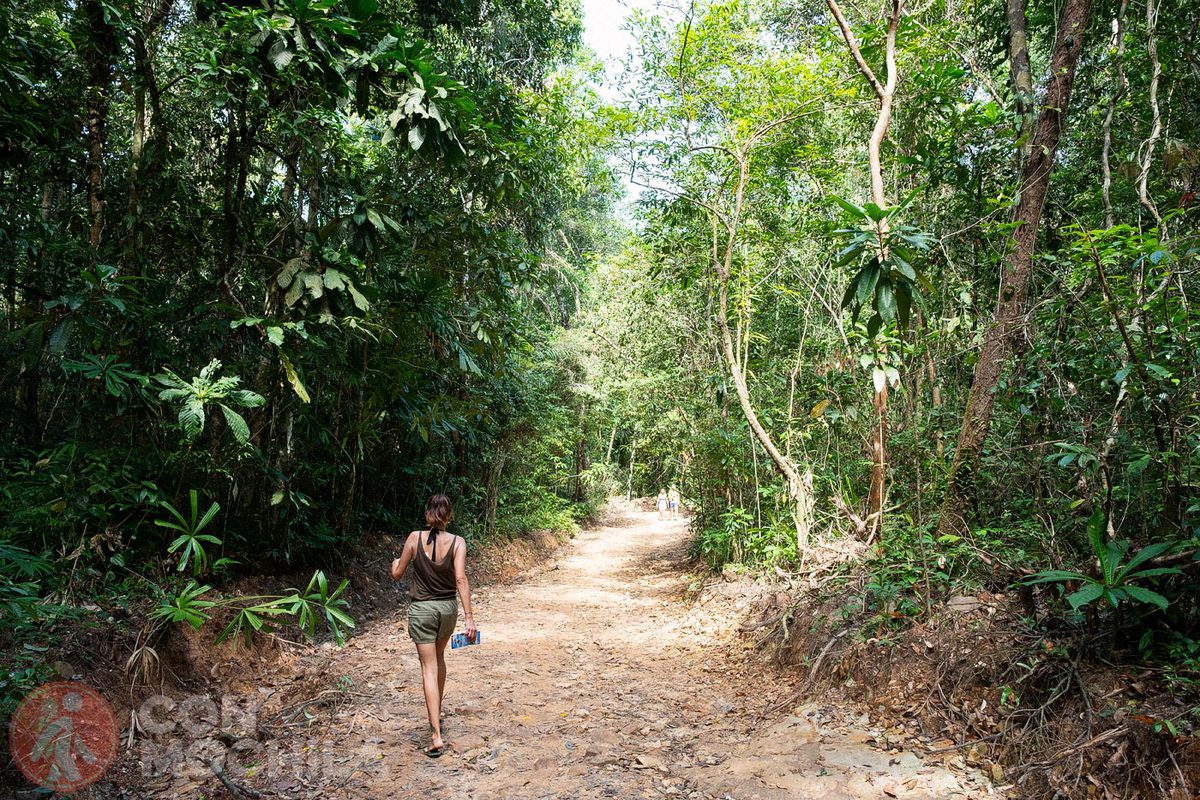
At these waterfalls, you will also find ropes to jump from the rocks into the water and perform flips.
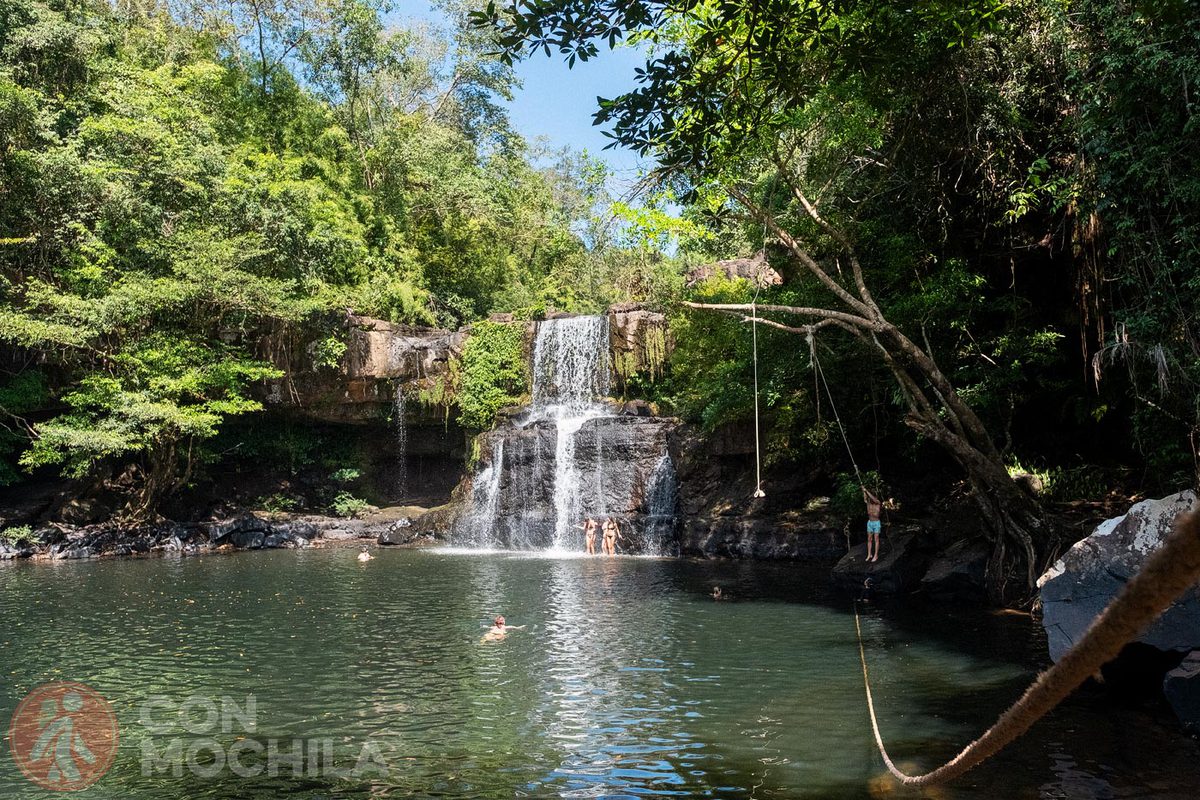
As mentioned earlier, there aren’t many activities on Koh Kood beyond beach hopping and drinking coconuts. If you’re looking for more action, you can rent a kayak.
You can also explore local life by visiting fishing villages like Ao Salat or marvel at nature by seeing the 500-year-old Makka tree.
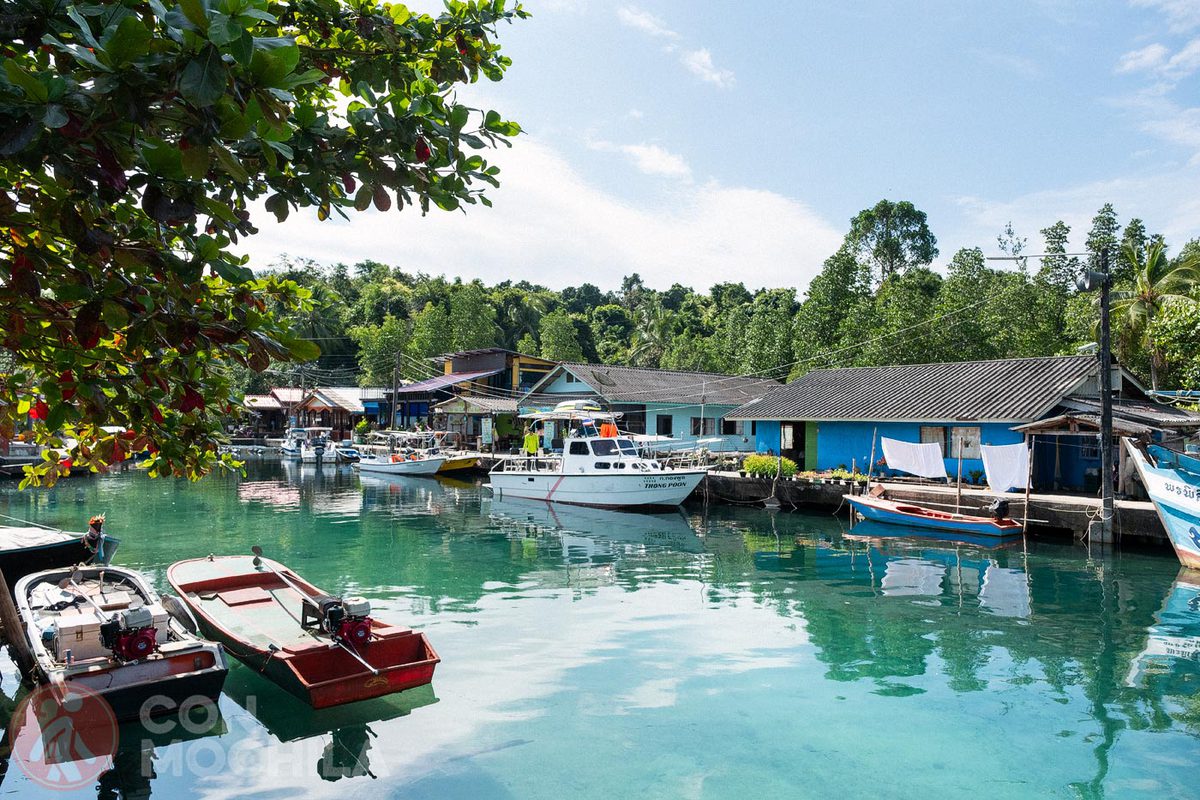
Activities in Koh Kood:
Koh Kood offers fewer budget options compared to other islands that are more geared toward backpackers. This is partly because it was once popular among travelers on package tours. However, you can now find rooms for $15-20. If you’re looking to indulge, there are a few resorts, such as the one we chose: Suanya Resort.
Te dejamos estos alojamientos por rango de precio (de más barato a más caro), para que elijas el que mejor se ajusta a tu bolsillo.
Exploring the ocean floor is a fascinating activity, though for many, it can also be a bit unsettling. Simply putting on a diving mask and looking beneath the water reveals a whole new world of colors and unknown forms of life.
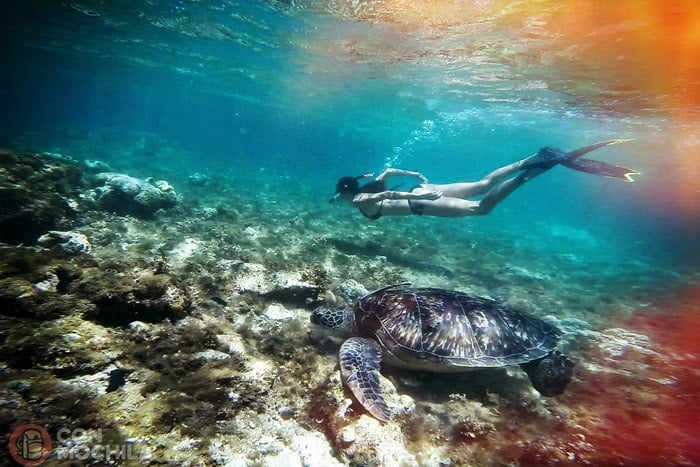
But this world needs to be cared for and respected. So, if you’re planning a trip that might include snorkeling and you don’t want your presence to have a negative impact on the ecosystem, you might be interested in what I share in the link above—what I’ve learned about responsible diving (with or without a tank).
Being a small island with villages consisting mainly of fishermen’s houses, you won’t find buses transporting you from one place to another. Accommodations and “agencies” (anyone with connections to transport companies) can arrange transfers to and from the port using pick-up trucks. However, the most popular mode of transport is the motorcycle.
The roads are quiet and in good condition, but as always, if you don’t have experience riding a motorbike, it’s best not to try it in Thailand (or Southeast Asia in general), especially on this island where well-equipped hospitals are far away. I don’t remember seeing many bikes on Koh Kood, but some accommodations might offer them.
Click on the image and it will take you to a new Google Maps window with all the points of interest to travel around Koh Kood.
While Thailand’s more discreet and relaxed beaches are no longer a secret, some islands still resist the path taken by their more developed counterparts. Places like Ko Samui or Phuket have become so developed that they almost lose that “island feeling” that many travelers seek.
Other islands, such as Koh Phangan, Koh Tao, or Koh Lipe, are on the verge of crossing the line from idyllic to overcrowded.
Then there are islands like Koh Kood, which are few in number but still retain their charm. They’re no longer completely mysterious, having gained some fame in certain tourism circles, but they still follow a different rhythm.
However, as more travelers seek to avoid crowded destinations, they risk becoming like the places they left behind or like Koh Rong, not far from here. Uncontrolled construction and inadequate waste management have turned this Cambodian paradise, once a well-kept secret, into a landfill in the sea.
Are we creating more problems by fleeing from other destinations? Does everything we touch turn into a mess?
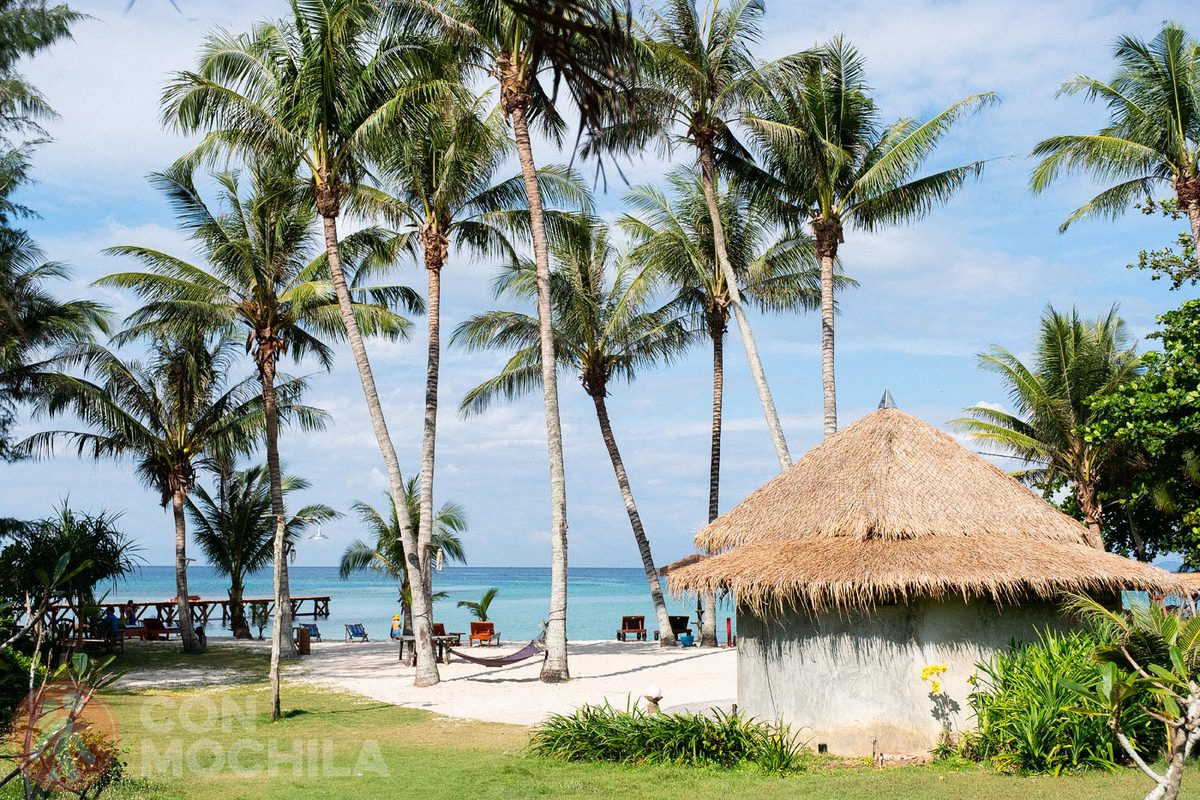
“Shh! Don’t talk about it, or it will get crowded!” We hear this often these days, but let’s face it: with more people traveling and the availability of the internet and Google Maps, finding any hidden corner of the world is increasingly likely. The romantic notion of receiving a map to a secret place, like an undiscovered beach, is becoming rarer. We did have a similar experience years ago on Koh Lanta, but that’s another story…
We have (naively) avoided discussing certain destinations where we had some of the best days of our travels out of a sense of obligation to the place, only to watch them transform rapidly.
If a destination appears in popular guides like Lonely Planet or the Rouge Guide, it will inevitably attract more tourists. And Koh Kood appears in Lonely Planet.
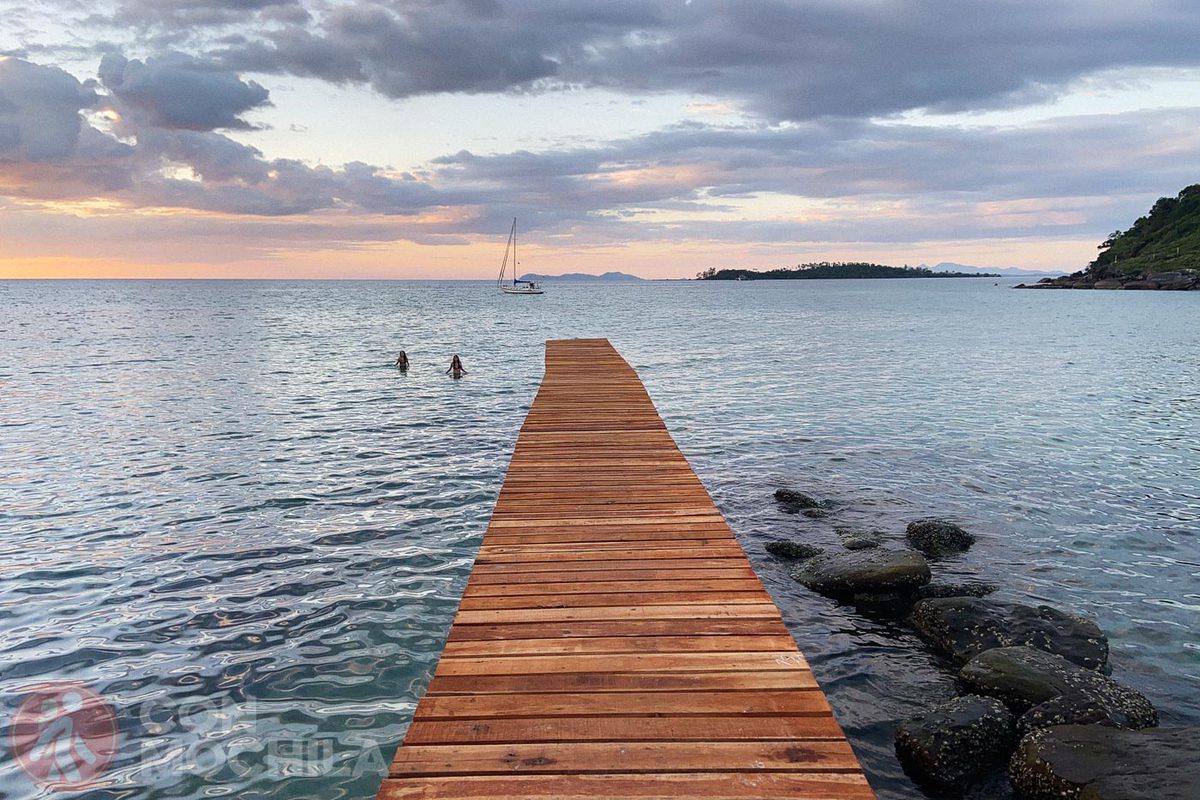
Is there hope for these paradises? Will Koh Kood eventually be overrun with resorts that cover the sand with asphalt? In my opinion, the only way to preserve these places is for us travelers to be the best version of ourselves and advocate for responsible tourism. If a destination becomes popular, it shouldn’t lose its charm as quickly as the number of visitors increases.
Sustainable tourism that favors eco-friendly options and rejects destructive practices creates a certain demand. What may be acceptable in your country may not be sufficient in a destination where waste management cannot be guaranteed.
Travel without leaving a trace, avoid plastics, and reject single-use plastics (especially straws). Reduce and offset your carbon footprint. Eat locally, support local businesses, and choose accommodations with a lower environmental impact.
And since we’re at the beach, let’s not disturb marine life: avoid touching corals and using reef-damaging sunscreens. Let’s care for paradise so it can be enjoyed for many years to come.
Goodbye, Koh Kood
See you later
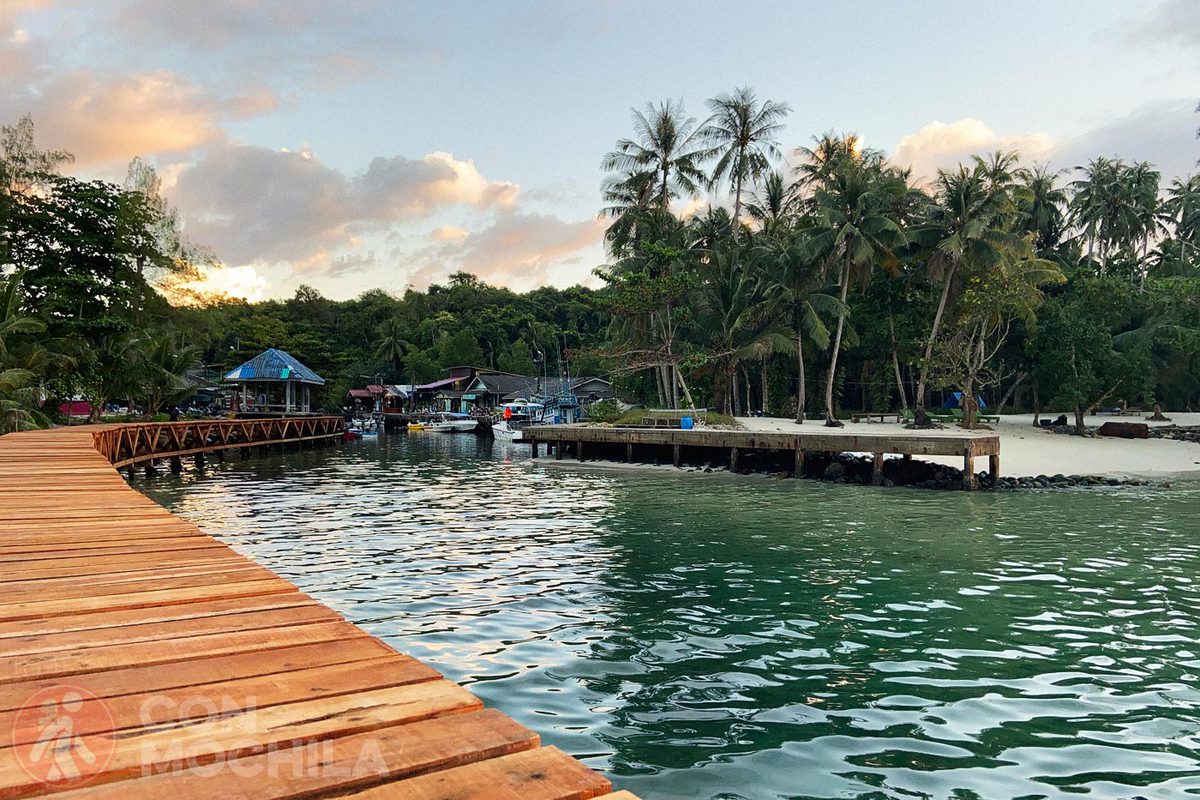
ACTIVE CAMPAIGN !
Until december 1st, you can get an automatic 15% discount on your Heymondo travel insurance.